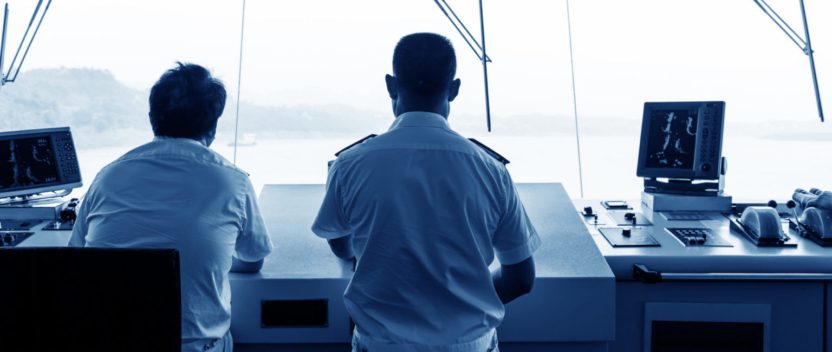Can a shipping company think like a start-up?
For shipping companies operating in the tramp sectors, the clamour of voices telling them they and their business model are relics of the past has grown so loud as to be almost deafening.
Thanks to the disproportionate attention paid to the views of crystal-ball gazers, we might believe that either the world economy or digital disruption – or both – will put paid to these sectors of the shipping industry before too long.
Despite this new received wisdom, global demand for raw materials as well as finished ones, has grown fast this year and is likely to continue growing for years to come.
Shipping demand is not facing extinction and supply is not redundant, but both are being re-ordered. What to do then, if your business is about privately-owned, debt-financed physical assets with trading patterns that are largely unpredictable and exposed to politics as well as economics?
Founded in 1946, Torvald Klaveness may not be the most blue-blooded of Norwegian shipping companies, but it proudly maintains that country’s shipowning traditions. In 2011, in the teeth of the downturn the company was reorganised, appointing Lasse Kristoffersen as the first CEO from outside the Klaveness family.
Kristoffersen’s strategy could be a blueprint for a bulk sector beset with low earnings and high costs, struggling to differentiate in a commoditised market: let technology be your servant not your master.
“Being digital is not a conversation about technology, it’s about the value you can create,” he told the Sea Asia Global Forum in Singapore. His background at DNV GL means he is well up on the megatrends impacting the industry: the innovation needed to reduce dependence on fossil fuels, the digitalisation of everything and the new business models required by the sharing economy.
To do this required thinking like a start-up and Klaveness established its own digital unit, prototyping solutions, encouraging both external and internal perspectives and applying them to the business.
“We can use technology to create transparency that creates value for customers. We believe that going digital will not only change the peripheral stuff but the fundamental way we think about value creation,” he explained.
“Shipping has run on the same business model for 100 years, with the ship as the system, so how do we improve that? We believe the move from analogue to digital with greater automation will force the change and that future could be for those can see all ships as one system.”
The company’s three programs, based around performance, insight for charterers and prediction of future trends start with the simplest public access information: AIS. Rather than continue to believe that the best strategy was to hide vessels unless absolutely necessary, Klaveness used AIS to build a picture of historical performance on itself and competitors so that it has a complete view of voyages, port calls and dwell times and likely next moves.
For Kristoffersen this echoes what the digital disruptors have done, change the model rather than try to improve vessel design or the way they are managed. After all, Uber did nothing to the car or the driver, it just changed where they put them into the business model.
The opportunity for disruption certainly exists and it reflects the fact that shipping’s inefficiencies are the cracks in which entrepreneurs can flourish. He cited the figures quoted by Dr Martin Stopford that up to one third of tanker shipping tonne-mile capacity is effectively going unused as an opportunity for charterers to exert more influence over their shipping operations.
What that may not mean is a race towards greater autonomy, or even unmanned vessels, because the marginal improvements that might be gained would be outweighed by better control of a network that spans shippers, owners, forwarders and ports, which together offer more significant opportunities than new capital assets.
“In general we are hearing far too much about automation – though it will happen – and too little on the consequences of bringing vessels and companies online, making the information flow dynamic and how the business is set up,” he added. “It is more important to understand how this is changing the ship in a system, rather than the ship as the system itself.”
The risk is to overestimate how fast things change and underestimate the implications of that change. We may see little significant technology advance in the next three to five years but the changes to vessels Klaveness designs in 10 years could be huge, even if there is little clarity yet on what they will be.
Either way there will be implications for service providers – operators, managers and others – if they fail to recognise that change is inevitable. He cites the example of Xeneta, featured on Great Circle in 2016, which first went to the container lines and asked to publish their pricing data, on the basis that the best-priced services would be the most popular.
“The liners all said no, so they went to the shippers who all said yes and we now know what the lines charge for which services and the lines lost that opportunity. What they ask now is why is there someone between us and our customer, defining our commercial strategy? That’s what we should be doing.”
Predicting the future is too important to be left to futurists and Kristoffersen went so far as to say “sometimes the textbooks are wrong and that could be listening to everything your customer says, because they don’t really know what they will ask for in three or five years’ time either”.
“The bigger change is how we will operate in future, the change to total logistics. The autonomous vessel may enable new business models, to be smaller, or different but we need both; the savings are in the business model.”


